Choosing Healthy Cookware
When choosing healthy cookware, it is crucial to consider the materials used in its construction. Materials like stainless steel, cast iron, and ceramic are excellent choices because they do not leach harmful chemicals into your food. Additionally, non-toxic nonstick coatings like ceramic or titanium provide a safer alternative to traditional nonstick pans. It’s also essential to avoid cookware made with materials like aluminum or Teflon, as these can potentially release toxins when heated. By prioritizing cookware that promotes safe cooking practices, you can help protect yourself and your loved ones from potential health risks associated with certain materials commonly found in cookware options.
Over the years, I have begun to realize how truly integrated and intertwined our overall health and wellness actually is. What we eat, how we sleep, our movement, our life’s balance are all incredibly important to a holistic and healthy life. I have learned that little changes can lead to big impacts (good and bad!) and so I diligently try to be conscious of everything that goes into fueling my body. This mindset, over time, has seeped into many other areas of my life. As a mother of four, I began to think more and more about the toxins that can sneak into my home – despite my best efforts to avoid them. Since my career as a recipe developer, holistic nutritionist (and mom!) has me spending a lot of time in the kitchen, I carefully select the things I use everyday.
Today more than ever, people are focusing on making healthy choices and selecting fresh, organic ingredients. However, we can often overlook an important aspect of healthy cooking: what we are using to actually cook our food. Traditional and popular cookware may contain harmful chemicals that can leach into our food, posing risks to our health. I have found some favorite non-toxic alternatives that protect my food and my family and I’m excited to share them with you!
Understanding the Risks of PFAS and PTFE (forever chemicals) in Cookware
Recent studies and consumer awareness have spotlighted the potential health risks associated with PFAS (Per- and Polyfluoroalkyl Substances) and PTFE (Polytetrafluoroethylene), commonly found in traditional non-stick cookware. PFAS, often referred to as “Forever Chemicals,” are a group of man-made chemicals notorious for their persistence in the environment and the human body, where they can accumulate over time. The health implications of PFAS exposure include increased cholesterol levels, changes in liver enzymes, decreased vaccine response in children, and increased risk of high blood pressure or pre-eclampsia in pregnant women. PTFE, while offering the convenience of non-stick surfaces, can release toxic fumes when overheated, posing a risk to both human health and the environment. Transitioning to healthy cookware and food storage options made from materials like ceramic, stainless steel, or glass can significantly reduce exposure to these harmful chemicals, contributing to a safer and more sustainable lifestyle.
Cast Iron
Cast iron cookware has stood the test of time and remains a top choice for many health-conscious cooks. These durable and versatile pots and pans have been used for generations, and for good reason. Cast iron is known for its excellent heat retention and even distribution, making it ideal for cooking a wide range of dishes. Additionally, it adds a small amount of iron to your food, which can be beneficial for those with iron deficiencies. To maintain its non-toxic properties, it’s important to season cast iron regularly to prevent rusting and ensure its longevity.
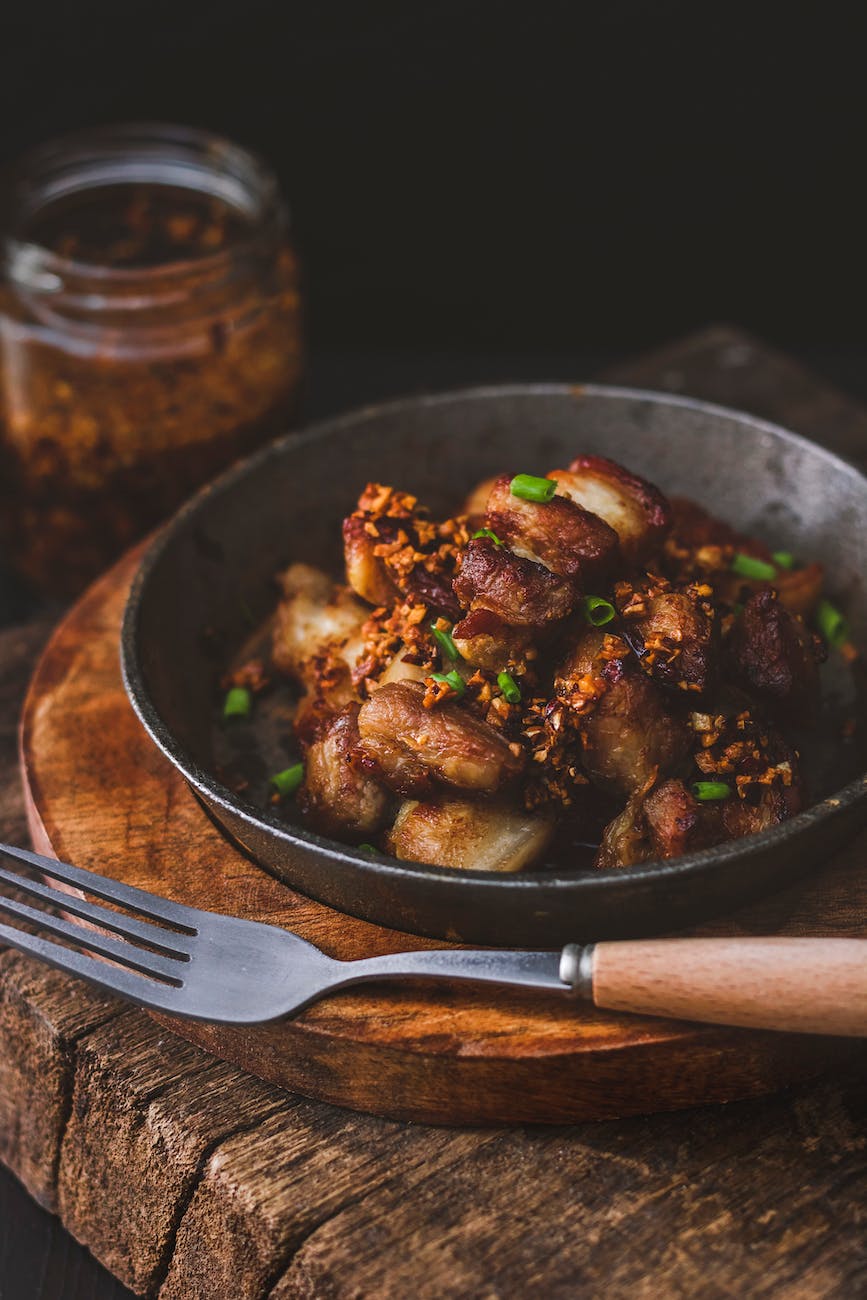
Stainless Steel
Stainless steel cookware is another popular choice among health-conscious people. Look for stainless steel cookware that is made with 18/10 or 18/8 stainless steel, indicating high-quality materials with low nickel content. Stainless steel is an alloy composed primarily of iron, chromium, and nickel. It’s known for its resistance to rust, corrosion, and staining. Stainless steel is not as good a conductor of heat as carbon steel. It tends to have hot spots and may require preheating to ensure even cooking. Stainless steel cookware does not require seasoning. It is naturally non-reactive, which means it won’t react with acidic or alkaline foods, preserving the flavor of your dishes. Stainless steel is highly durable and resistant to staining, rust, and corrosion.
I use stainless steel pots for boiling water, making jam, and making caramel and mulled wine during the holidays.
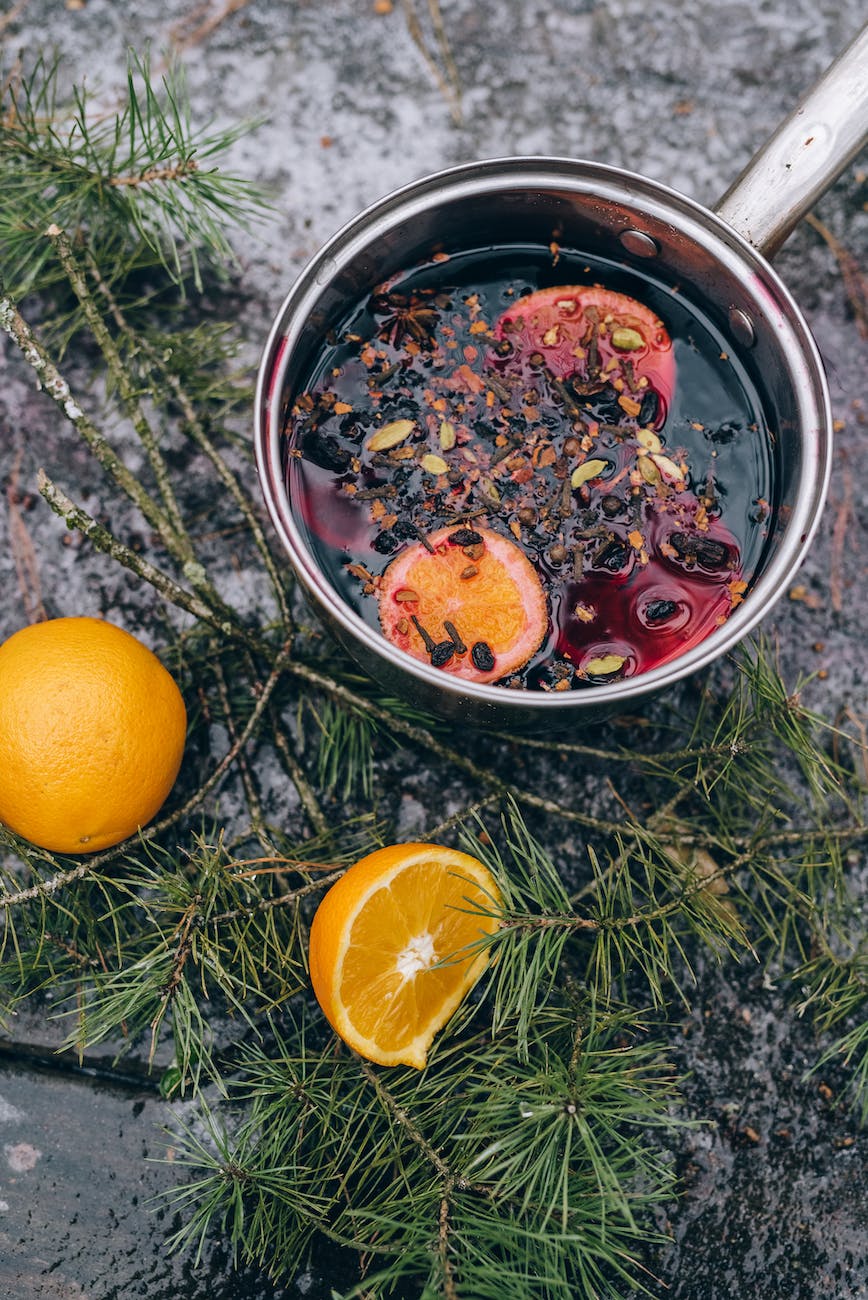
Carbon Steel
Carbon steel cookware is made primarily from iron and carbon, with a small amount of other elements like manganese and silicon. It doesn’t contain the same level of chromium or nickel as stainless steel, which makes it more susceptible to rusting if not properly seasoned and cared for.
Carbon steel is an excellent heat conductor. It heats up quickly and distributes heat evenly across the cooking surface, making it a preferred choice for tasks that require precise temperature control.
Carbon steel cookware needs to be seasoned, similar to cast iron, to develop a natural, non-stick surface. Seasoning involves coating the pan with oil and heating it to create a polymerized layer. Once properly seasoned, it becomes nearly as non-stick as some non-stick coatings. While carbon steel is also quite durable, it requires more maintenance to prevent rusting. Proper seasoning and regular oiling are essential to maintain its longevity. Carbon steel, when properly seasoned and maintained, is also considered safe for cooking.
I own this pan and this wok -you will need to season them with avocado or flax oil when you first purchase them, but then they will be your go-to non-stick, non-toxic pans.
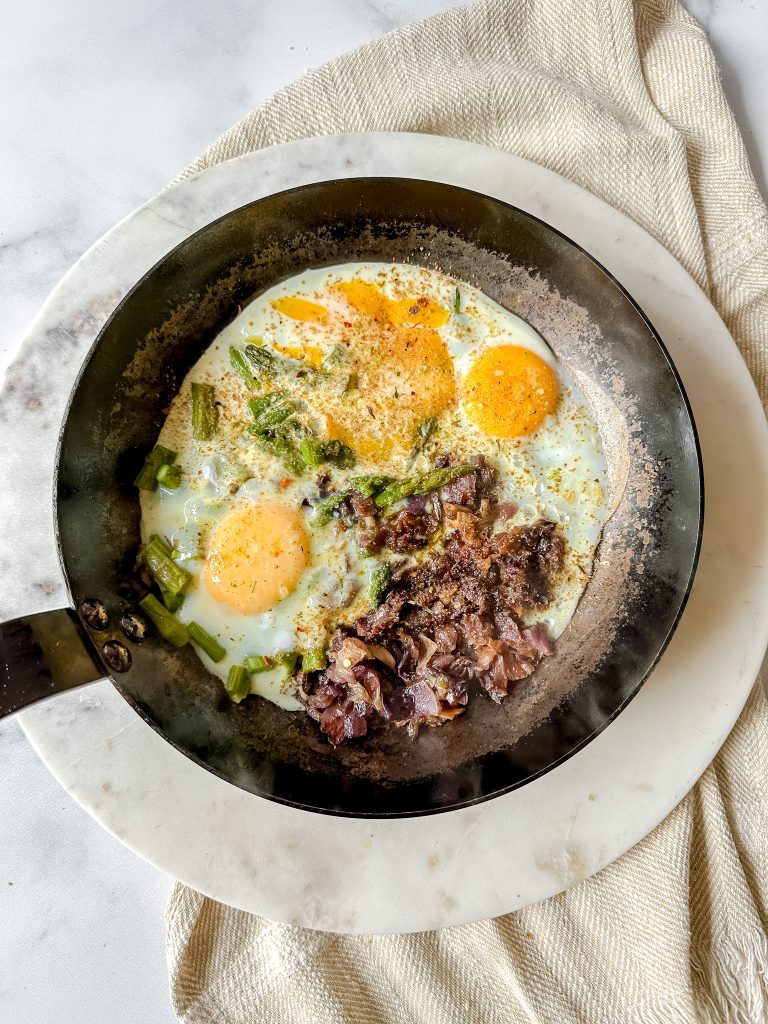
Ceramic
Ceramic cookware, made from natural materials like clay and minerals, is free from chemicals such as PFOA and PTFE. It provides excellent heat retention and distributes heat evenly, allowing for easy and precise cooking. Look for ceramic cookware that is lead-free and labeled as food-safe. Caraway is a great brand for ceramic cookware. I also own a couple Greenpan skillets and while they don’t seem to retain their non-stick qualities for long, they are great in the beginning and will last longer if you do not use them at high heat. Convincing my husband and kids not to use high heat has been a struggle!
Glass
Glass cookware is an excellent non-toxic option for oven baking, roasting, and food storage. Glass is “non-reactive,” meaning it won’t leach any chemicals into your food. Some of my favorite go to’s for glass bakeware are my Pyrex baking dishes (which I also love for the ease of clean-up) and these glass containers with lids (convenient for food storage, too!)
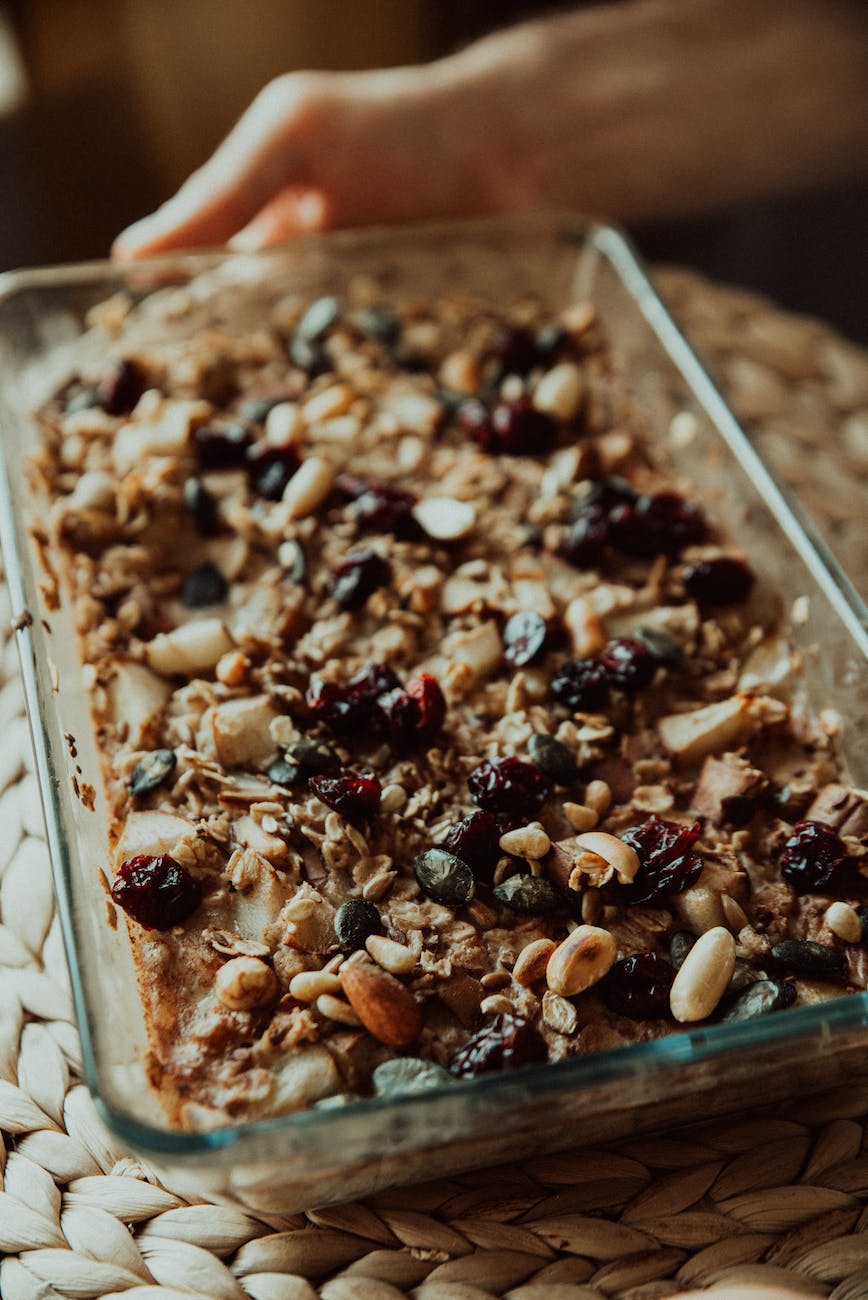
Enamel-Coated Cast Iron
Enamel-coated cast iron cookware combines the benefits of cast iron with a non-reactive enamel coating. The enamel prevents the iron from leaching into the food while providing a smooth, easy-to-clean surface. It’s ideal for slow cooking, braising, and simmering, as it retains heat exceptionally well. Look for enamel coatings that are free from lead and cadmium like my favorite Staub cookware. I use my Staub 12” skillet and Dutch Oven almost daily!
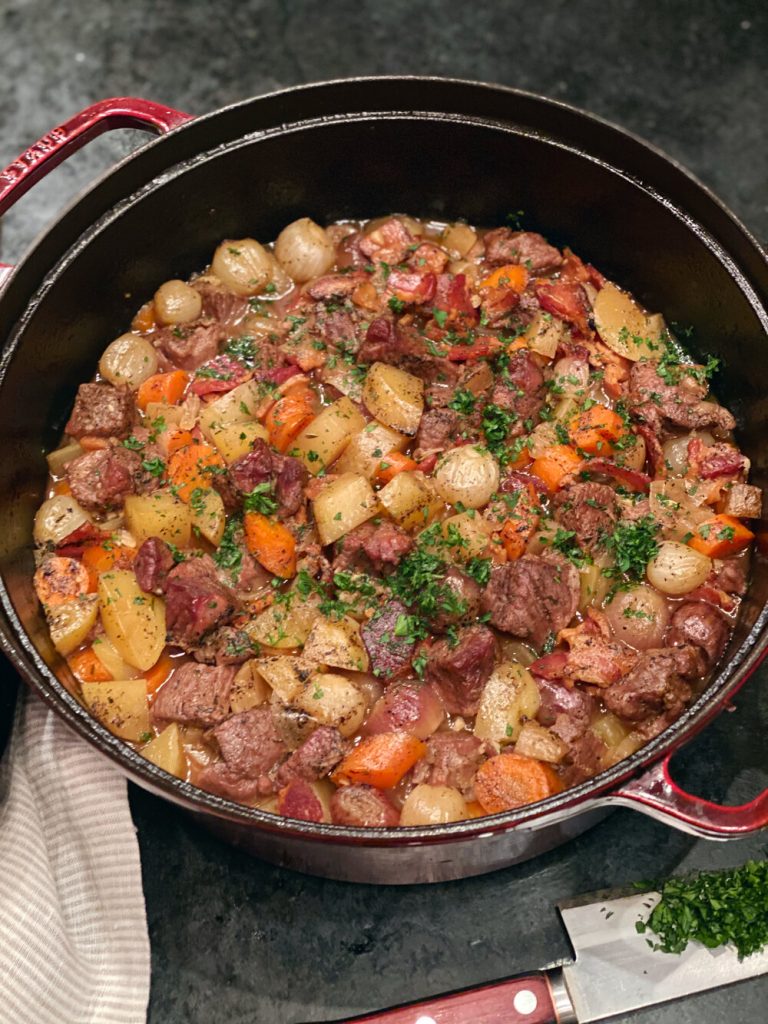
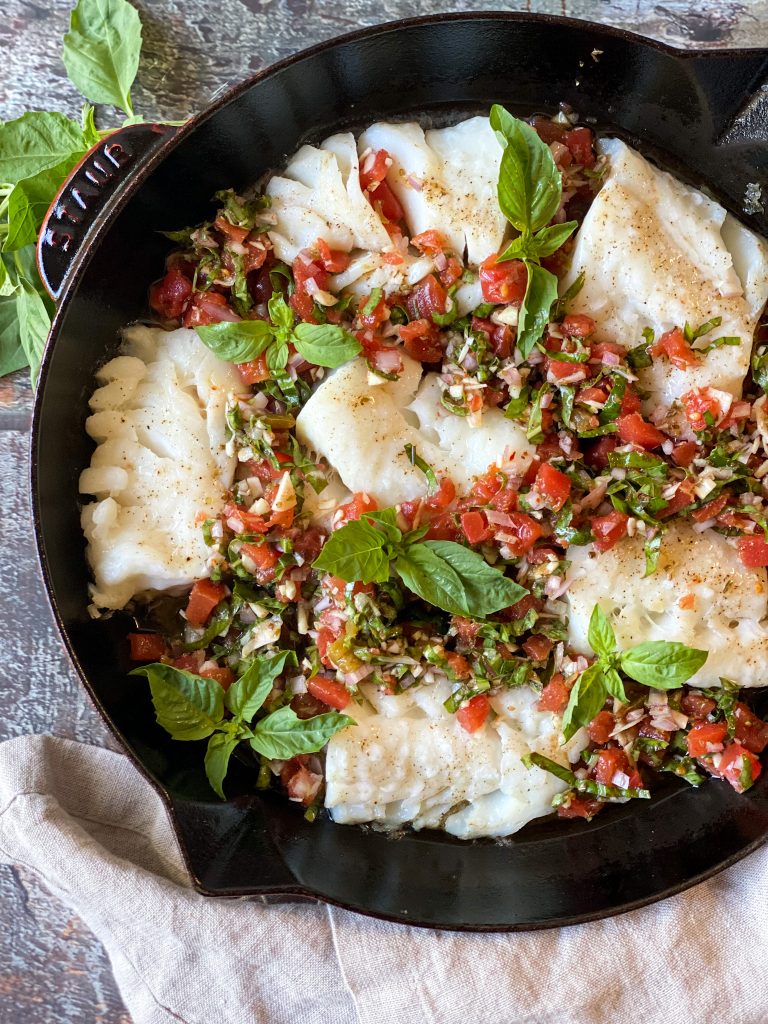
Shop the whole non-toxic cookware roundup HERE!
The Importance of Sustainable Food Storage Solutions
In addition to choosing healthy cookware, selecting sustainable food storage solutions is crucial for minimizing environmental impact and ensuring the longevity of your food. Materials like glass, stainless steel, and silicone offer durable, reusable options that can replace single-use plastics and reduce household waste. Glass containers, for example, are not only non-reactive but also microwave and dishwasher safe, making them a versatile choice for storing and reheating leftovers. Stainless steel containers provide a lightweight, rust-resistant alternative ideal for on-the-go meals, while silicone bags offer a flexible, leak-proof solution for storing a variety of food items. By incorporating these sustainable storage solutions into your kitchen, you can contribute to a healthier planet while enjoying the practical benefits of durable, multi-use containers.
Food Storage
Not only are the pots and pans we cook in important but the vessels we use to store our food are also important. Transitioning to sustainable food storage solutions is a key step towards reducing our environmental footprint. Reducing chemical exposure in the kitchen through the use of safer cookware and storage options is an important aspect of holistic wellness. You’ll want to choose safe, non toxic containers that won’t allow chemicals to leach into your food. Here are a few of my favorite options:
Glass Containers
I prefer to use glass containers as they do not leach chemicals into your food. Many glass containers come with plastic lids but that’s okay as long as the lid does not touch your food or even better, is made with BPA free plastic, like these. Even better, a glass container with a bamboo lid! I own this collection of Zwilling vacuum seal glass storage containers and I love how long food lasts in them! I also recycle glass jars and have quite a collection of mason jars that work beautifully for storing leftovers. Glass containers can be frozen, kept in the fridge and you can even use them to reheat your food in the microwave or toaster oven.


Silicone Bags and Containers
Silicone bags and containers are more recent options for safe food storage. Choosing food storage options with a lower environmental impact like silicone bags, supports a healthier planet. Silicone bags can also be used in the fridge, freezer or in the microwave. Look for good quality food grade silicone.

BPA Free Plastic Containers
These containers are easier to find nowadays and will be labelled as BPA-free. BPA is short for bisphenol which is a chemical that may get into our food. Research shows BPA can be harmful to our health.
Beeswax Wraps
Made from beeswax, these wraps are considered a better option than plastic wrap. They are reusable and washable so they are more environmentally friendly.
When it comes to choosing cookware and food storage, prioritizing non-toxic options is essential for maintaining a healthy lifestyle. If you’re like me, and want to work on eliminating those sneaky toxins found in normalized, everyday household products, I hope this can be a good place for you to start. I am grateful for the peace of mind I get to enjoy, knowing I am preparing healthy and safe meals for my loved ones!
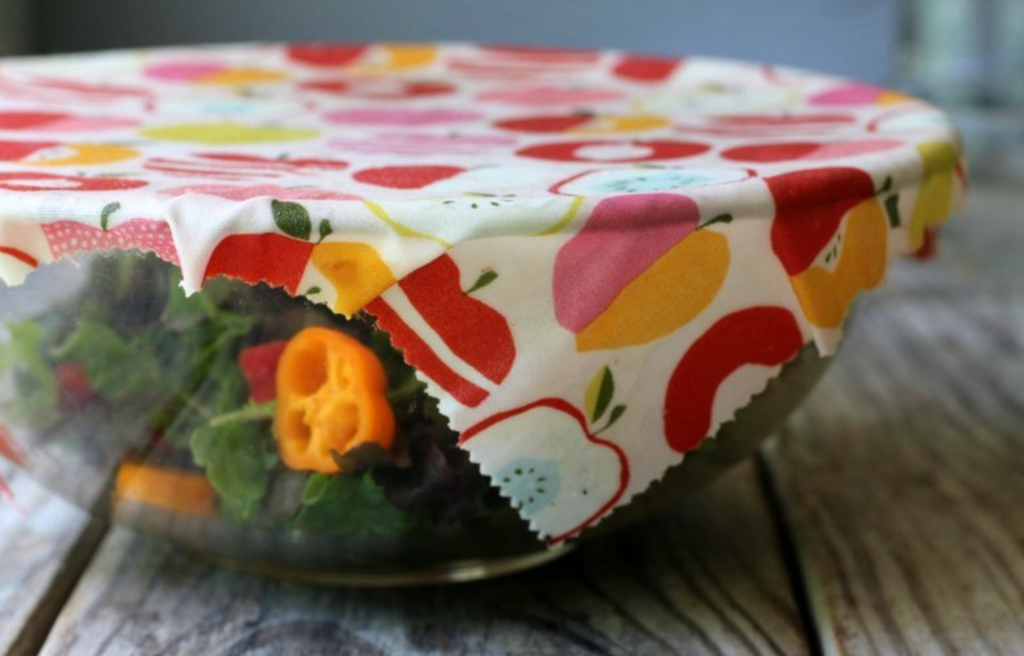
Expert Tips for Maintaining Non-Toxic Cookware
Maintaining the integrity and longevity of non-toxic cookware requires specific care and handling to prevent damage and ensure safe usage. For cast iron and carbon steel, regular seasoning with a thin layer of oil helps create a natural, non-stick surface and prevents rust. Ceramic cookware, known for its delicate surface, should be cleaned with soft sponges and non-abrasive cleaners to avoid scratches. Stainless steel cookware benefits from immediate cleaning after use to prevent staining and maintain its shine. Additionally, avoiding metal utensils with ceramic-coated cookware can extend its lifespan and prevent the ingestion of flaked materials. By following these expert tips, you can preserve the quality of your non-toxic cookware and enjoy its benefits for years to come.
Happy and Healthy Cooking!
For ongoing healthy tips and tricks, sign up for my newsletter. (When you request my free blood sugar balancing smoothie guide, you will automatically receive my weekly newsletter!)
I have linked to the products that I use and trust. I do this as a service to you but need to tell you that these links may allow me to make a few pennies in the process without costing you anything!
Sources:
- https://www.foodandwine.com/lifestyle/kitchen/best-non-toxic-cookware
- https://nutritionaltherapy.com/wp-content/uploads/2018/05/Safe-Cookware-Storage-Containers.pdf
- https://www.organicauthority.com/organic-food-recipes/non-toxic-cookware-brands-to-keep-chemicals-out-of-your-food
- https://www.foodnetwork.com/how-to/packages/shopping/product-reviews/best-nontoxic-cookware
- https://foodrevolution.org/blog/healthy-cookware/
- https://www.carawayhome.com/products/cookware-sets/
- https://neoflamshop.com/
- https://www.ewg.org/areas-focus/household-consumer-products/cookware-food-containers

